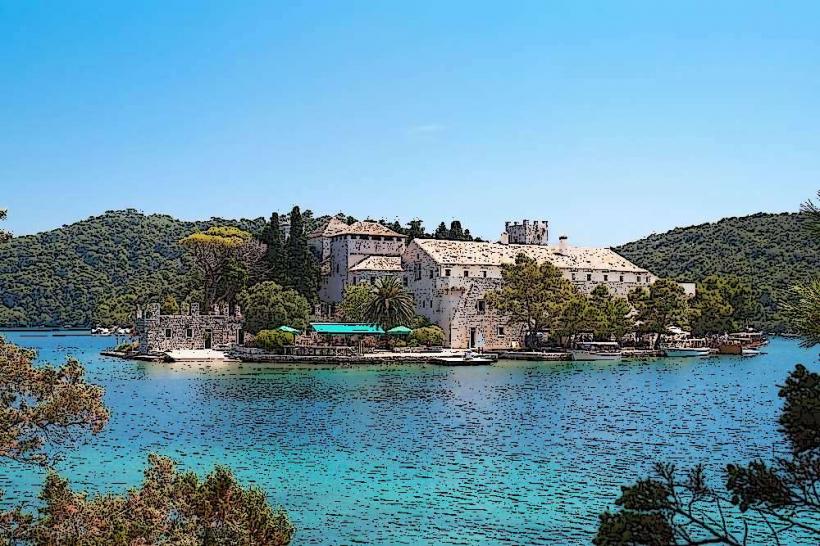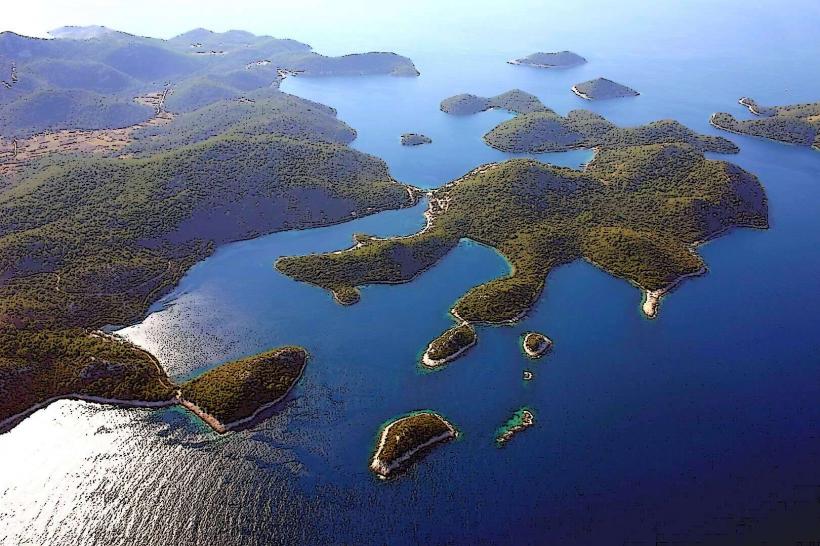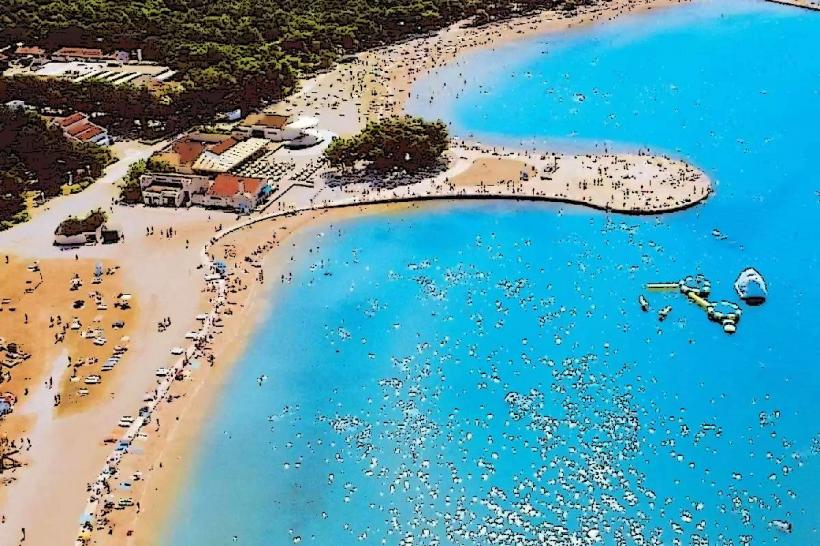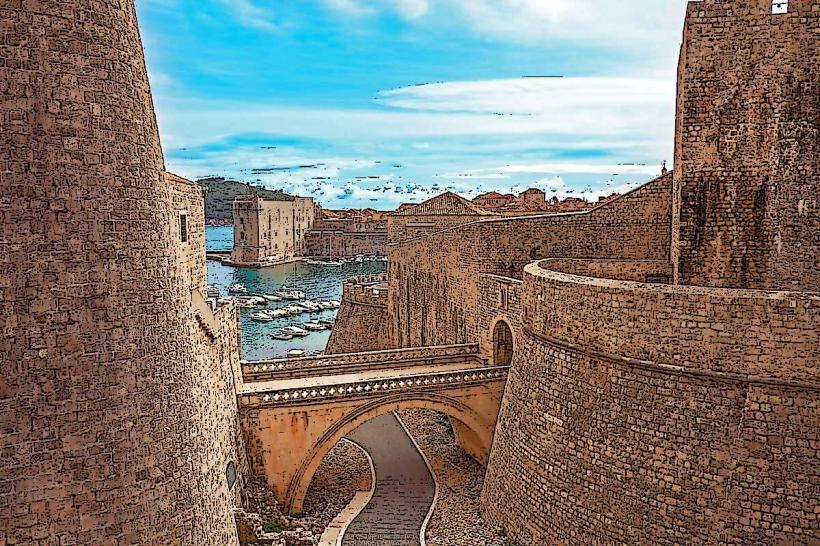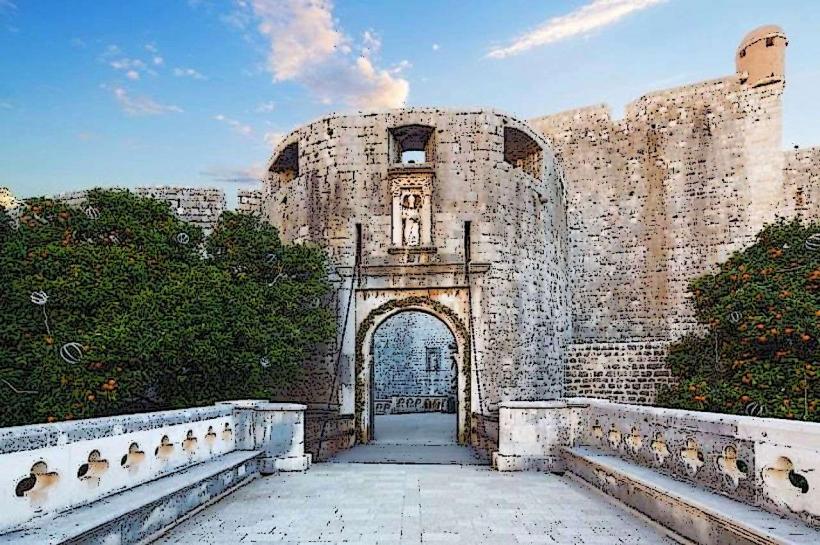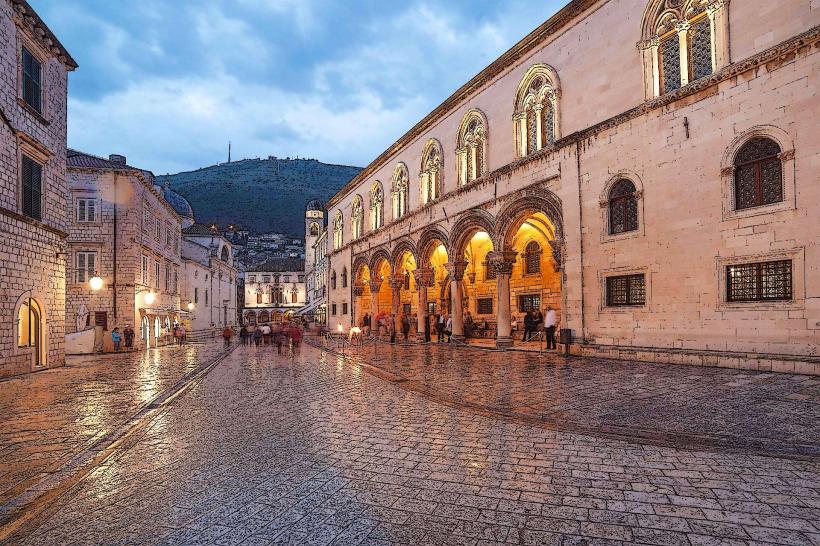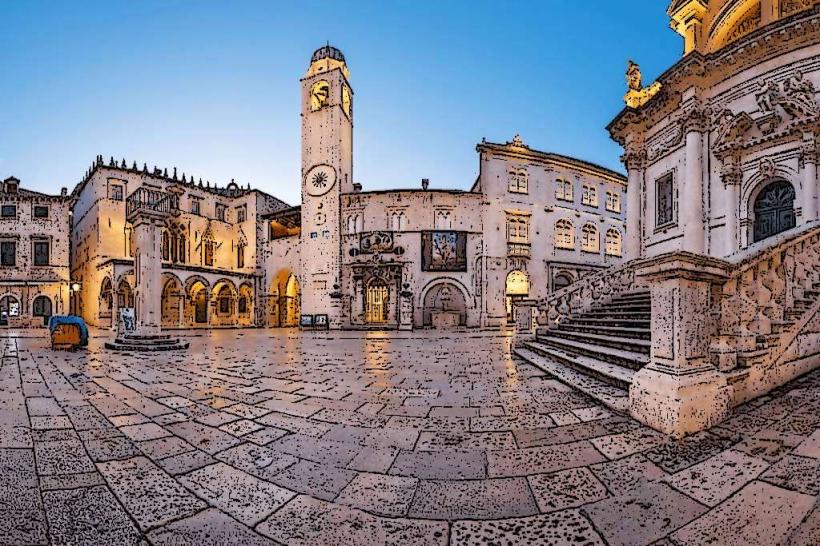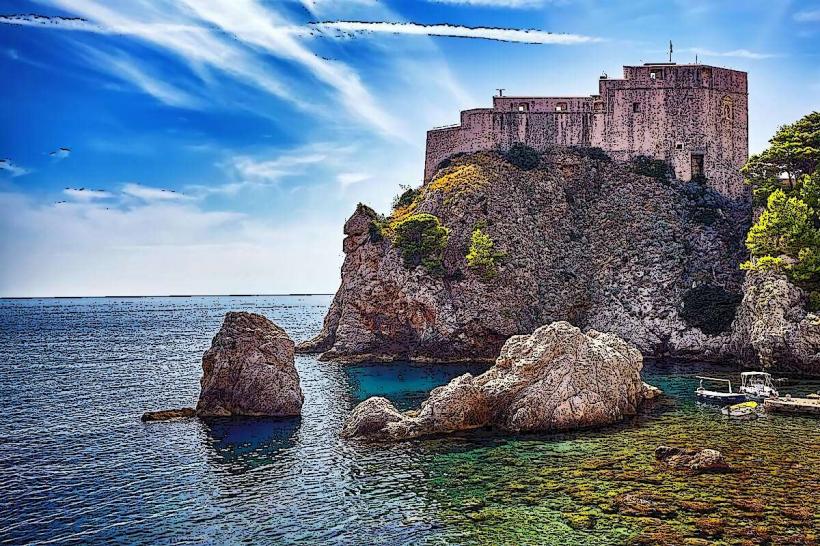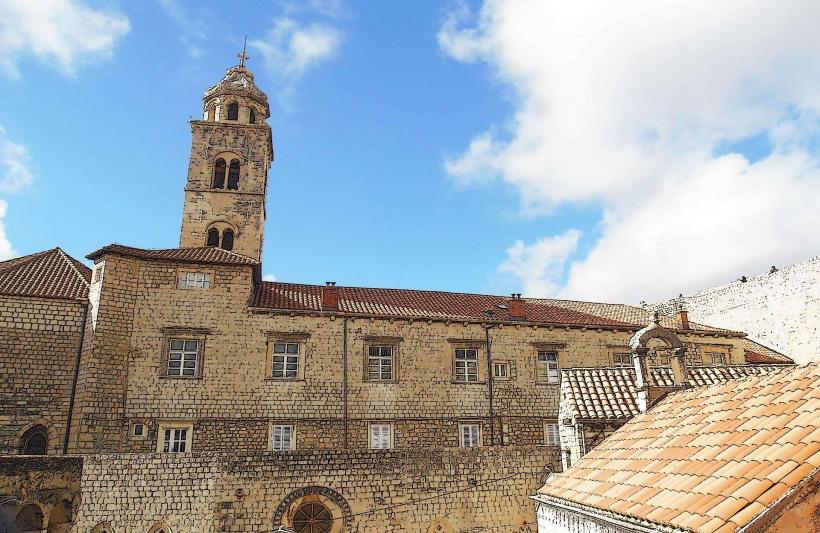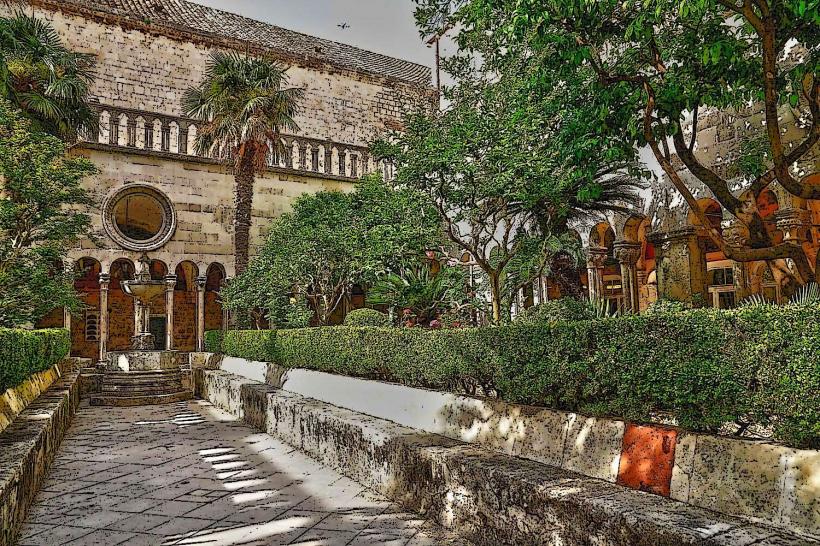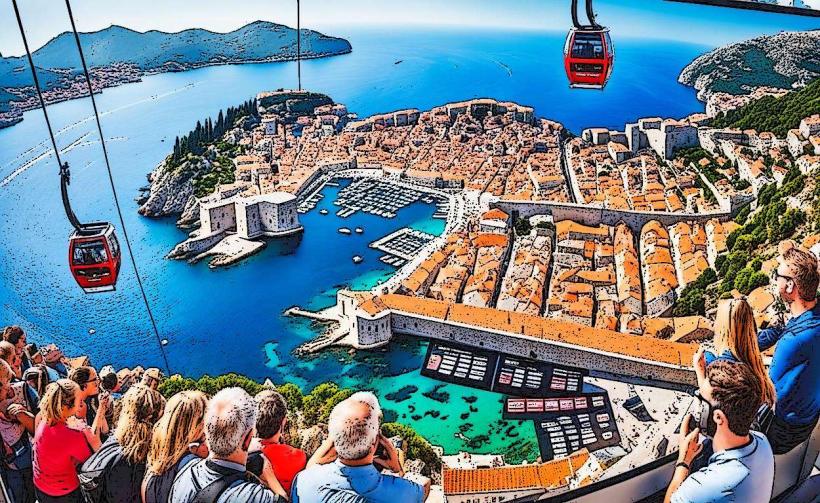Information
Landmark: Stradun (Placa)City: Dubrovnik
Country: Croatia
Continent: Europe
Stradun (Placa)
Stradun, also known as Placa, is the main street in the heart of Dubrovnik’s Old Town. It is one of the most iconic streets in Croatia, and a must-see for anyone visiting the city. Stretching approximately 300 meters from Pile Gate in the west to Ploče Gate in the east, Stradun is a bustling, pedestrian-only thoroughfare lined with historical buildings, shops, restaurants, and cafés. Its beauty, historical significance, and central location make it a focal point for both locals and tourists alike.
Historical Background
- Origins: Stradun's origins date back to the 12th century, when the street was created by joining two separate settlements that existed on either side of the area. The original street was a marshy valley, and over time, it was paved and developed into the grand thoroughfare seen today.
- Name: The street is officially known as Stradun, a name derived from the Italian word “strada, meaning street.” Locals sometimes refer to it as Placa, which simply means "street" in Croatian.
- Development: Stradun was originally a narrow street, but it was expanded and renovated during the Renaissance period, with its current layout largely taking shape in the 16th century. The renovation aimed to give the street a more unified, symmetrical appearance, with uniform buildings on both sides, creating the elegant look it has today.
Architectural Features
- Renaissance Influence: The architecture along Stradun is characterized by Renaissance and Baroque styles, reflecting the city’s wealth and cultural influence during those periods. The buildings on the street share a harmonious design, with limestone facades and uniform height, contributing to the street’s aesthetic coherence.
- Stone Pavement: Stradun is paved with large limestone flagstones, which were originally sourced from local quarries. The street’s smooth, shiny surface is a defining characteristic, and it becomes particularly dazzling under the sun or when wet, reflecting the beauty of the buildings around it.
- Arched Porticos: Many of the buildings along Stradun feature arched porticos at ground level. These porticos provide shaded areas for pedestrians and enhance the street’s elegant, open-air atmosphere.
- Bell Towers and Churches: At either end of Stradun, you will find bell towers and historical churches that add to the architectural charm, including the Church of St. Blaise and the Rector’s Palace.
Landmarks Along Stradun
- Rector’s Palace (Knežev dvor): Located on the northern side of Stradun, this magnificent Renaissance palace was once the seat of the Rector, the head of the Republic of Ragusa. Today, it houses the Cultural History Museum.
- Church of St. Blaise (Crkva sv. Vlaha): Situated on the southern side of Stradun, this Baroque church is dedicated to Dubrovnik’s patron saint, St. Blaise. Its white marble facade and interior are significant examples of the city's religious and artistic heritage.
- Sponza Palace (Palača Sponza): A short distance off Stradun, this palace is an architectural gem that combines Gothic, Renaissance, and Baroque styles. Today, it houses the State Archives of Dubrovnik.
- The Bell Tower: Located near the western end of Stradun, the Bell Tower is part of the Franciscan Monastery, and it has become a defining feature of the street.
- Onofrio’s Fountain: While not directly on Stradun, this large fountain sits just off the main street at the Pile Gate. It was built in the 15th century as part of the city’s water supply system.
Key Features
- Central Gathering Place: Stradun has always been the heart of Dubrovnik’s social and political life. Historically, it has been a place for public events, markets, festivals, and celebrations.
- Shops and Cafés: Today, Stradun is lined with boutiques, souvenir shops, and cafés, making it a popular spot for shopping and people-watching. The street is particularly lively in the evenings when locals and tourists stroll along it, enjoying the ambiance.
- Street Events: Stradun is the site of many of Dubrovnik's festivals and public events, including the Dubrovnik Summer Festival. During these events, the street is often transformed into a stage for performances, concerts, and theater productions.
- Stone Pavement: The street is famously paved with white limestone flagstones that shine brightly when wet or under the sun, adding to the street's unique charm and beauty.
Visiting Stradun
- Opening Hours: As a public street, Stradun is always open to visitors. The street is closed to vehicles, so you can freely explore it on foot at any time.
- Best Time to Visit: Early mornings or late evenings are the best times to experience Stradun without the heavy crowds. However, the street is vibrant at all hours, particularly in the summer months when events and festivals fill the street with life.
- Accessibility: Stradun is easily accessible from both the Pile Gate and Ploče Gate, as well as from various other points within Dubrovnik’s Old Town.
- Nearby Attractions: Stradun connects to several other important sites in Dubrovnik, including the City Walls, the Dubrovnik Cathedral, and the Old Port.
Why Visit Stradun?
- Historical Significance: Stradun is not only the main thoroughfare of the Old Town but also a historical and cultural center of Dubrovnik.
- Architectural Beauty: The street’s uniform architecture and Renaissance influences make it one of the most picturesque streets in the world.
- Cultural Experience: Stradun is the site of much of the city’s daily life and a gathering place for locals and tourists alike, offering a lively atmosphere with plenty of cafés and shops to explore.
- Cinematic Fame: Stradun has been featured in several films and TV series, most notably in Game of Thrones, where it was used to depict King’s Landing.
Fun Facts
- Shiny Surface: The limestone pavement of Stradun has a unique quality of becoming particularly shiny when it rains, reflecting the street's beauty.
- Popular Filming Location: Due to its medieval charm, Stradun has appeared in Game of Thrones and other international productions.
- Split Origin: Stradun was created by joining two older streets, the eastern and western parts of Dubrovnik.
Conclusion
Stradun (Placa) is the essence of Dubrovnik, blending its rich history, architectural splendor, and vibrant culture. As the central artery of the Old Town, it captures the spirit of this UNESCO World Heritage site and offers visitors a chance to experience the unique ambiance that has defined the city for centuries. Whether you're exploring the architectural gems, shopping, or simply enjoying the atmosphere, Stradun remains the heart of Dubrovnik.

